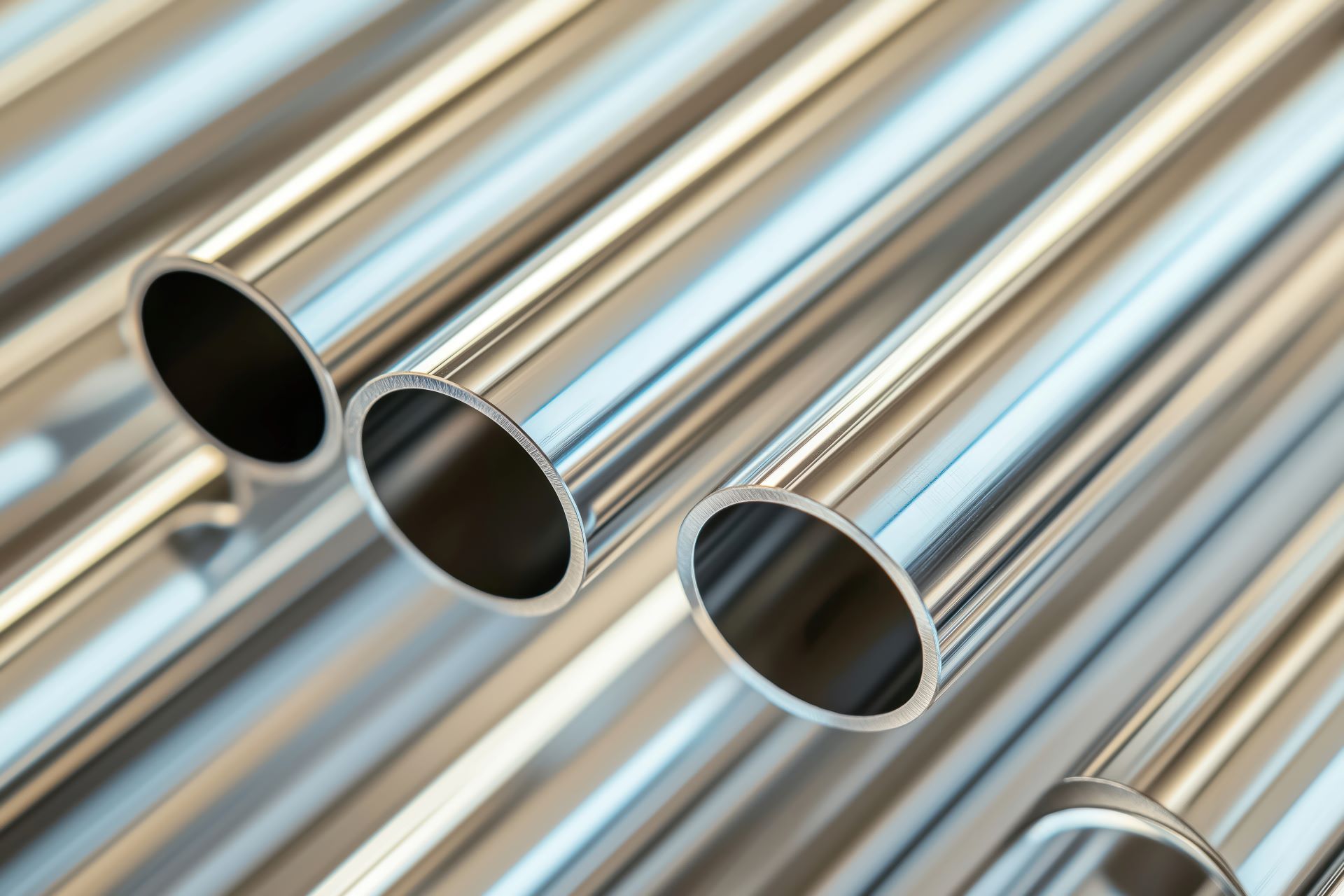How Metal Surface Finish Impacts Hygiene in Food & Beverage Manufacturing
In food and beverage processing, cleanliness isn’t just a priority, it’s a regulatory and operational necessity. Whether manufacturing dairy products, soft drinks, or prepared meals, the materials used in sanitary piping, tanks, and equipment must meet strict hygiene standards. One factor that plays a significant role in achieving those standards is metal surface finish.
The right surface finish on stainless steel surfaces helps reduce microbial contamination, enables easier cleaning, and supports regulatory compliance in FDA- and USDA-inspected facilities. In sanitary tubing systems and other contact surfaces, the finish can mean the difference between a product that passes inspection and one that poses contamination risks.
What Is a Metal Surface Finish?
A metal surface finish refers to the texture, smoothness, and cleanliness of a metal’s surface after fabrication. Stainless steel used extensively in sanitary piping and food contact applications can be finished in multiple ways using mechanical polishing, grinding, or electropolishing.
Finishes are measured using Ra (Roughness Average) in microinches (µin) or micrometers (µm), which quantifies the average surface deviations. The lower the Ra, the smoother and more hygienic the surface.
Why Surface Finish Matters for Sanitation
In sanitary applications, a rough surface can trap food particles, bacteria, and cleaning agents leading to contamination, biofilm buildup, or failed inspections. A smoother finish, on the other hand, improves:
- Cleanability - Fewer microscopic pits or crevices means less residue and easier CIP (clean-in-place) system efficiency.
- Corrosion resistance - Smooth finishes minimize areas where moisture and chemicals can accumulate and initiate pitting corrosion.
- Microbial resistance - Polished surfaces inhibit microbial adhesion and reduce biofilm formation.
- Regulatory compliance - USDA, FDA, and 3-A Sanitary Standards often reference finish levels for contact surfaces.
Choosing the right finish ensures process integrity and extends equipment life in food and beverage plants.
Common Stainless Surface Finishes and Their Impact
Here’s a breakdown of the most common finishes used in sanitary processing and their typical applications:
| Finish Type | Roughness (Ra µin) | Process | Application in Food & Beverage | Hygiene Level |
|---|---|---|---|---|
| Mill Finish (2B) | 40–100 | Cold rolled + pickled | Non-contact surfaces, structural components | Low |
| No. 4 Finish | 20–35 | Brushed mechanical polish | Equipment exteriors, structural parts | Moderate |
| Sanitary Polish (32 Ra) | ≤32 | Polished to sanitary spec | Product contact tubing, vessels | High |
| Electropolished | ≤20 | Electrochemical process | Ultra-clean process piping, biotech applications | Very High |
Choosing the Right Finish for Sanitary Tubing
For most food-grade tubing and fittings, the standard surface finish is 32 Ra or smoother on the inside diameter (ID), often achieved through mechanical polishing. This level is widely accepted by:
- 3-A Sanitary Standards
- USDA Dairy regulations
- FDA cGMPs (Current Good Manufacturing Practices)
In high-purity or pharmaceutical environments, surfaces are often
electropolished to achieve ≤20 Ra. Electropolishing removes microscopic burrs and surface impurities that mechanical polishing can leave behind. It’s common in systems handling CIP fluids, purified water, and other sensitive media.
Impact on Cleaning and Inspection
CIP systems rely on turbulent flow and chemical solutions to remove product residues without disassembly. The success of CIP depends in large part on internal surface smoothness:
- A rougher interior finish can cause turbulence dead zones, harboring residue and bacteria.
- Smooth finishes promote laminar flow for more effective cleaning.
- Surfaces finished to sanitary spec allow visual inspection and validation using borescopes or swab testing.
Facilities using substandard surface finishes may experience more
frequent system fouling, longer cleaning cycles, and failed microbial testing.
Fabrication Considerations for Surface Finish
Surface finish is not just about the raw material, it’s about the entire fabrication process. Welds, bends, and cuts can all alter surface quality. At Action Stainless, we support food and beverage fabricators by:
- Providing sanitary tubing in 304 and 316L with polished ID/OD surfaces
- Offering in-house mechanical polishing to 32 Ra or better
- Supporting weld prep, tube bending, and orbital weld-friendly material prep
- Supplying material traceability and finish certifications on request
Whether you need straight lengths, custom lengths, or polished bends, finish quality is maintained throughout the job.
Stainless Grades and Surface Finish Compatibility
Both 304 and 316L stainless steel are used in food applications, but surface finish plays a major role in performance.
- 304 stainless is cost-effective and performs well with polished finishes for most standard food processes.
- 316L stainless is preferred for high-acid, high-salt, or CIP-heavy systems, offering better corrosion resistance. Its smoother grain structure also yields better results in electropolishing.
Action Stainless stocks both grades in multiple finish levels to meet sanitation and corrosion resistance requirements.
Final Thoughts
A high-quality metal surface finish is essential to maintaining hygiene, cleaning efficiency, and regulatory compliance in food and beverage manufacturing. Whether specifying tubing for a dairy line or building a CIP skid, surface finish is as important as alloy selection.
At Action Stainless, we support sanitary fabricators, OEMs, and processors with polished stainless steel products that meet or exceed hygiene standards. With in-house polishing, MTR traceability, and industry-grade tubing, we help our customers deliver systems that perform and pass inspection.






